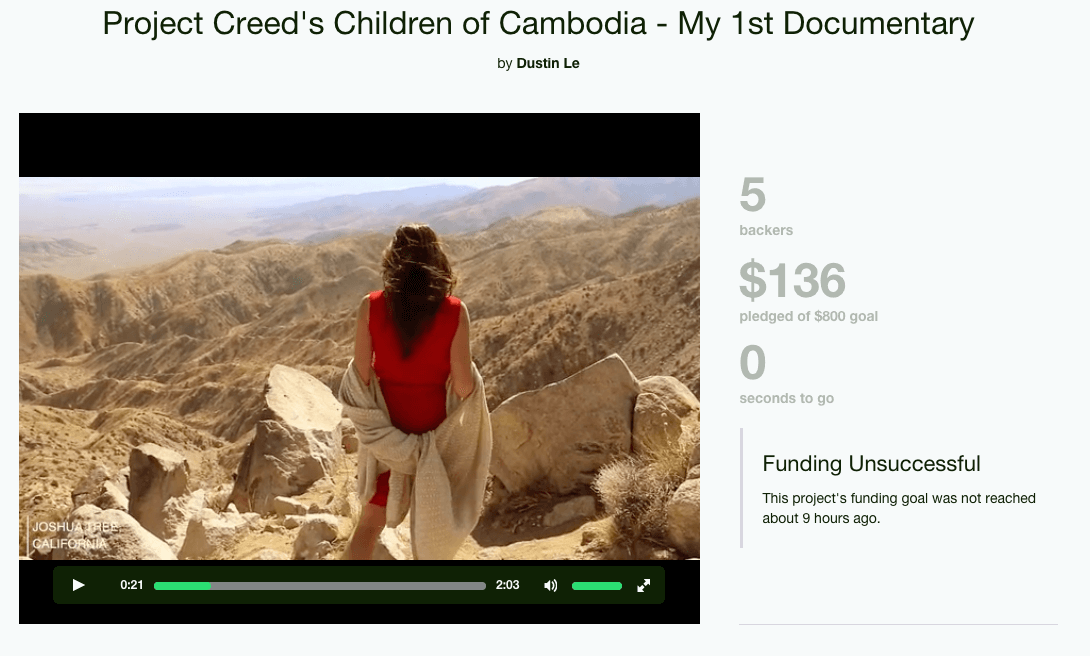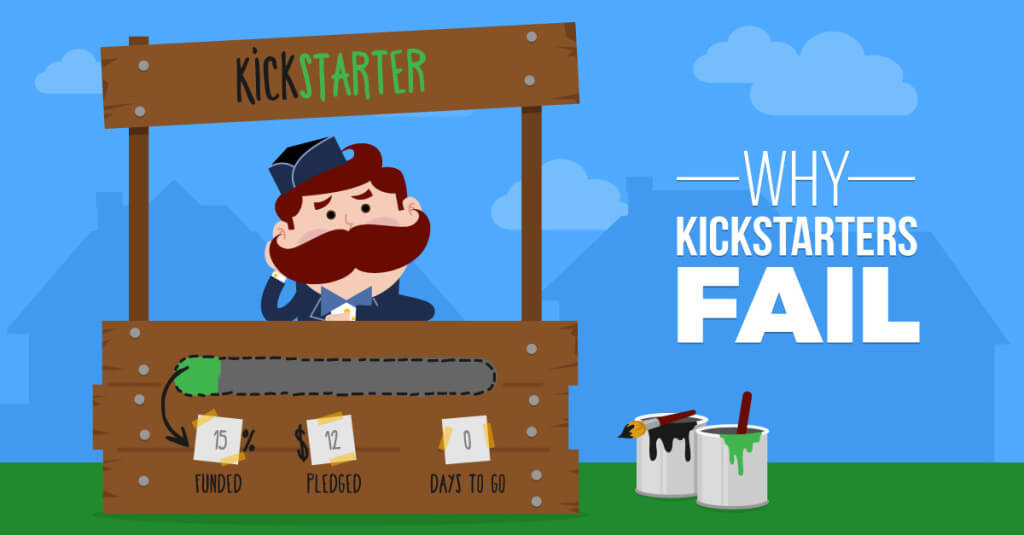
15 Nov Why Kickstarters Fail
[ad_1]
In 2013, Icelandic pop star Bjork launched a Kickstarter. The idea: an app that would teach children about music and science. The goal: about $600,000.
Unlike most people with projects on Kickstarter, Bjork had name recognition, Twitter followers, and a huge fan base. Surely anyone with a MoMa retrospective could crowdsource some funds, right?
But Bjork’s Kickstarter failed.
Though there was a lot of finger-pointing as to why it failed, it’s clear that she miscalculated the steps she would need to take to get her app off the ground. Fellow celeb Kickstarter user Amanda Palmer said that it failed because Bjork didn’t get the message to a wide enough audience and didn’t communicate it well. “I think björk is awesome,” she says, “and i think she could have put together a better campaign.”
The effort failed simply because Bjork didn’t campaign hard enough.
And it’s not just Bjork. 63% of Kickstarters fall flat on their face, largely because people make the same mistake the pop star did: they miscalculate. Through a series of missteps, even great projects that generate excitement and pledges still miss their mark. To this date, $244 million has been pledged that, upon missing the deadline, doesn’t go to the project creator.
Even if you have a great idea—or a great fan base—there are a number of pitfalls you need to avoid when doing a Kickstarter. Here are the top 5 mistakes, and how you can avoid them.
They Set Unrealistic Goals
It’s no surprise that Kickstarters asking for an absurdly high figure are often first to bite the bullet. Once you set that magic number, it’s locked in. So from the very beginning, you need to have a goal that’s realistic and attainable.
This failed Kickstarter for Talk is Cheap, a father-daughter drama film, got a lot of pledges—and over 700 people interested—but because the goal was so high, it came out with nothing.
But some Kickstarters have the opposite problem: they set the bar too low. By underestimating your expenses, potential donors will view your project as a whim rather than a well thought-out plan. This failed project sought only $800 to film a documentary of about children in Cambodia.
It’s clear that $800 can’t cover “project expenses that come with filming a documentary, modest living expenses, and airfare.” It ran into the opposite problem of Talk is Cheap. It set the bar far too low, making the project creator look like an amateur not worth backing.
Think About the Money
Successful Kickstarter project creators agree you should set funding at the minimum amount needed to get your project off the ground. Any more and you risk missing your goal. Any less and you risk not completing your project, or looking foolish. No one is going to believe that you can start a new version of Space Camp with a budget of $300.
Do your research by looking what previous Kickstarters have done in your category. How much did they ask for? Did they make their goal? Look at successful campaigns and failed ones. Take a look at Staff Picks that were featured on the homepage. Study what similar projects asked for, and how much they made. This should be your jumping off point for your own project.
Think About the time
Successful project creators also urge you to think about your time resources when you set your goal. Kickstarters are a lot of work—if you’re not prepared to sink a lot of time into fundraising, your goal should be lower.
Again, look to successful campaigns to estimate the amount of time they poured into achieving their goal. Even after a Kickstarter is funded, you can see the timeline of their campaign, including updates and posts the creators made to the page.
Did they write lengthy blog posts? Did they promote a Twitter campaign? Did they make videos along the way? Try to gauge how much time they spent, and whether you can match it.
They Don’t Advertise
Getting the word out is important. But if you start telling people about your project the day your Kickstarter launches, you’re doomed to fail. Spread the word about your Kickstarter, but make sure you do it in advance.
Start With Your Existing Social Networks
Having a large social network helps the cause. But as Bjork and other celebrity examples reveal, having a lot of friends on Facebook isn’t going to guarantee success.
Entrepreneur and marketing expert Seth Godin (who funded his most recent book on Kickstarter in under 3 hours) writes that the site is a means to “organize and activate (your) tribe.”
This is where Bjork failed. She had the fanbase, or “tribe.” She just didn’t do anything about it. In fact, she only tweeted 3 times in 2013—and not a single one mentioned her Kickstarter.
If you don’t “activate” your friends, to use Godin’s vocabulary, you’re not fully using their potential. Thunderclap is an app that can help you with that. It has people commit to tweeting about a product on the day it launches. With the click of a button, a pre-populated Tweet will send at a determined time, helping people utilize their social networks to the fullest.
BeeLine, a cycling product, used Thunderclap to prepare for the launch of their Kickstarter. By getting 108 people to auto-Tweet, their message was guaranteed to reach 146,813 people the second their Kickstarter page unveiled.
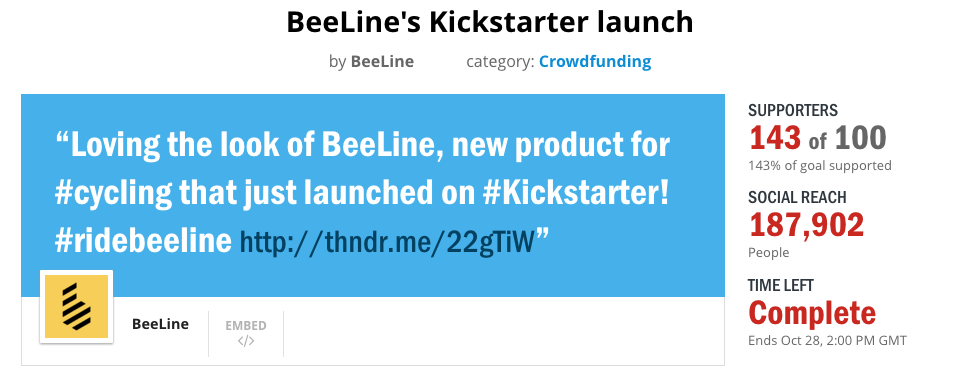
You Need to Expand Your Reach
If you’re not an international pop star, your existing network isn’t enough.
Social media is an important tool in your belt, but in order to use it wisely—to “activate the tribe”— you need to use Facebook ads to get your message to more people.

Facebook advertising is a cheap and efficient way to expand your reach. If you’re launching a Kickstarter, you need to use Facebook ads. Not only do they get the word out, they allow you to track ads and how they’re performing, so you’ll know what’s working and what’s not. Facebook’s powerful targeting abilities allow you to get your message across to the right people.
This ad for the 4th dimension watch, for example, is for “architecture lovers”—you can bet that Facebook’s tools allowed this ad to get to the right audience.
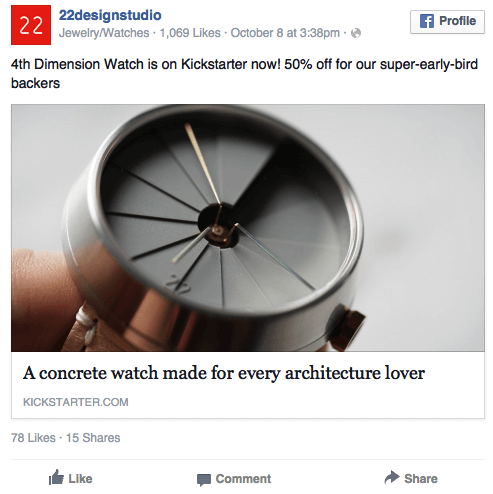
They Don’t Show Their Work
There’s a difference between being intrepid and imprudent. Successful crowdfunding requires trust, and it’s on you to develop that with a bunch of strangers on the internet. You’re making a promise to your donors, and you need to pitch them something they can believe in.
Like anyone who has ever made (or heard) a pitch can attest to, that promise needs to sound believable and interesting. And to do that, you’re going to need data to back you up.
Prove Yourself
Remember that you need to sell a story, not just spin a story.
Tell people why you’re uniquely qualified to complete this project. Show your credentials by linking to previous work that you’ve done. Have friends or family serve as references by commenting on your project. Show that you know what you’re talking about by outlining the steps it will take to complete your goal.
This Kickstarter for an electric guitar add-on does a good job of introducing themselves to donors. Not only does it shows each member of the team, it presents a video in which they introduce themselves and their backgrounds. A little trust goes a long way.
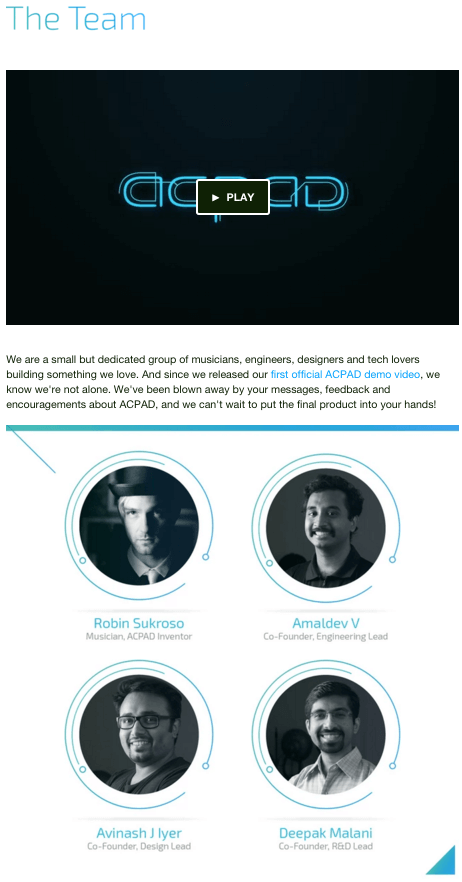
Get Serious About Your Presentation
Packaging matters. Once someone gets to your page, they’re only going to stay if you have an engaging and clean presentation. High-production media like photos and videos are mandatory. With a video, your project has a 15% higher chance of success.
Sometimes, technical information can be hard to get across, whether it’s explaining the mechanics of your super awesome bowling ball technology or just presenting your budget. A line-by-line budget can make people feel like they’re doing a tax return. Use an infographic, like this one from the successful Kickstarter for the documentary Island Soldier.
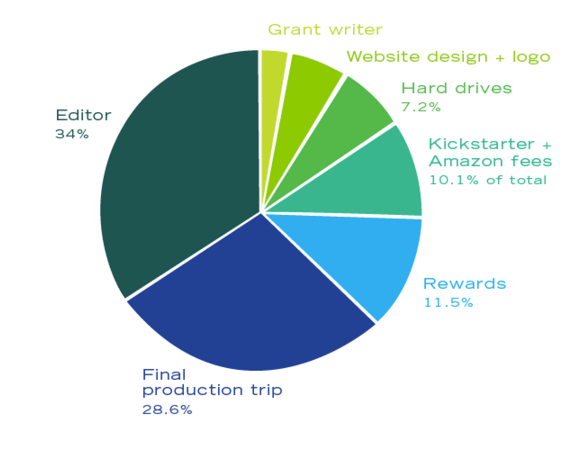
They Ignore Reward Tiers
Kickstarter’s rewards are often the main reason people donate. But a lot of people ignore them.
Unlike charity projects (which Kickstarter doesn’t allow), the point of donating is not to feel good about contributing to a cause. It’s about backing something that you want to see completed, and reaping the benefits of the finished project.
Reward tiers aren’t just icing on the cake.
Bad Pricing Systems
Your tiers need to be interesting and well-priced. Throwing in some low, “useless” price points is a good way to get people to pay for a higher pricing tier.
Ever wonder why you can get an online subscription to your favorite magazine for $1 an issue but an online and print copy for $1.15? The $1 online subscription feels almost useless. Why wouldn’t you pay an extra .15 for the hard copy (even if you don’t really want it?)
Behavioral economist Dan Ariely has a lot to say on the matter. Useless price points, it turns out, are quite useful. They get consumers to turn from “bargain hunters” to “value seekers,” in Ariely’s words.
Whereas someone might have stumbled upon your page only willing to pledge $5, seeing that spending an additional $2 gets them a free t-shirt will get them to pay for the next reward tier.
Other times, pricing systems are so baroque that no one can understand them. Bjork’s post had 17 rewards offered for the $250 reward tier—which made it hard to follow. Try simplifying your pricing tiers. Check out this infographic for the successful Kickstarter campaign for Sideclick, a universal remote.
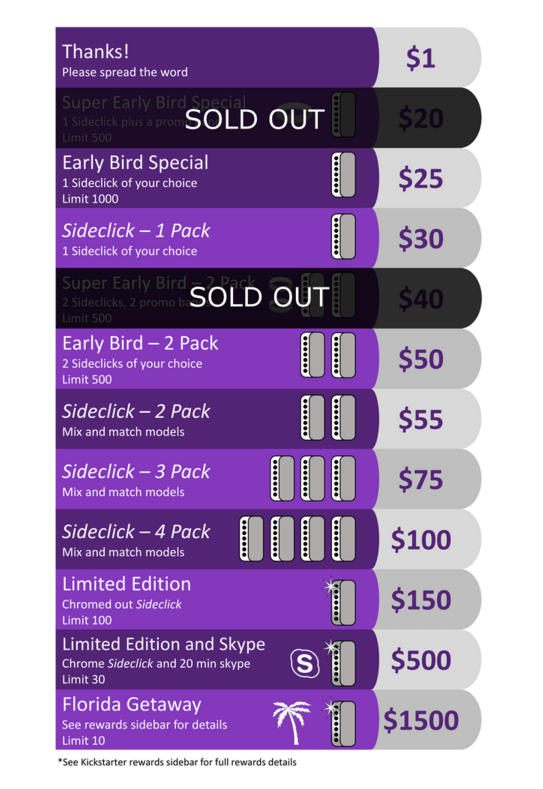
Make it easy on the eyes. If users have to scroll down to look at the reward tiers, scrolling through dozens and dozens of options, they’re going to have a hard time making a decision. Respect their time by helping them along.
Bad Reward Delivery
Only Kickstarters that get to their goal need to send out their rewards. But it’s not something you should overlook—especially if this is the start of a business. Your Kickstarter is about starting a following, or a base of people.
Don’t screw it up by promising something you can’t deliver. A lot of Kickstarters come back for a second round of funding—and you don’t want to blow that one by not delivering on the first.
Ethan Mollick of the University of Pennsylvania Wharton School studied over 48,000 Kickstarter campaigns and saw that 8 months after a campaign succeeded, 5% of small projects (raising 50k or less) and 75% of large projects (raising over 50k) still hadn’t delivered on their promises.
And it upset donors.
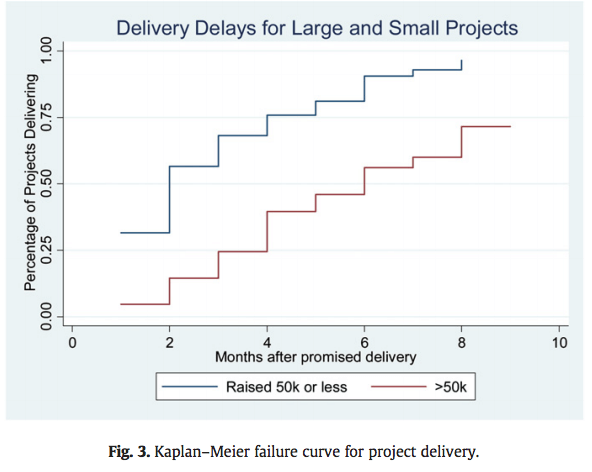
Even high-profile projects don’t always deliver. Eyez boasted innovative technology that could record HD video through eyewear years before Google Glass was released. It raised almost $350,000, largely because donors who paid at least $150 expected to receive a pair in return. Three years later, the glasses still hadn’t shown up at their doorsteps. Eyez was forced to refund all money from pre-orders on their site (as is mandated by law), but Kickstarter donors never saw a dime.
Failing to deliver is a surefire way to get bad press and your company started off on the wrong foot.
They Screw Up The Timeline
You have a finite amount of time to raise money. Choosing what that window is—and how you behave throughout it—is crucial to getting to your goal before the clock ticks out.
Get the Window Right
One easy mistake to make is thinking that the longer window a project has, the more likely it is to make its goal. Surely it’s easier to raise $25,000 over a period of 3 months than it is over 3 weeks, right?
Wrong.
Data indicates that Kickstarters with a long window often have a harder time reaching their goals. In 2011, Kickstarter changed the maximum window from 90 to 60 days in order to help you along alon . As this graph indicates, they actually have a lower success rates than ones with tight windows.
Regardless of the size of the campaign (as indicated by circle size), shorter campaigns were more successful.

Source: Kickstarter
Don’t Fear the Dead Zone
Data also reveals a fundraising “dead zone” between kicking off and closing. Projects tend to raise money in the initial stages, when the project is fresh and exciting. When the deadline is fast approaching, the pressure cooker effect gets people to donate in a last-minute rush. But in between, there’s often a trough.
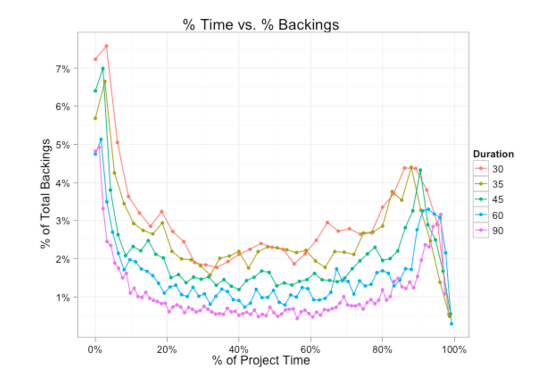
Source: Kickstarter blog
It’s hard to sit through the dead zone, watching the clock tick away and your dollar amount stay the same. The biggest mistake you can make here is to not do anything at all.
Your Kickstarter should not be static. You can change pledge levels, and engage differently. It should reflect what’s happening with donors. Set goalposts and benchmarks. Send emails. Use Facebook ads that show what’s happening with your campaign.
This one, from the AdEspresso ad gallery, uses a great technique of making small changes to their ad as the campaign progressed. In addition to advertising the project ahead of time, their campaign changed as they reached their goal. Here’s one of the first ads:
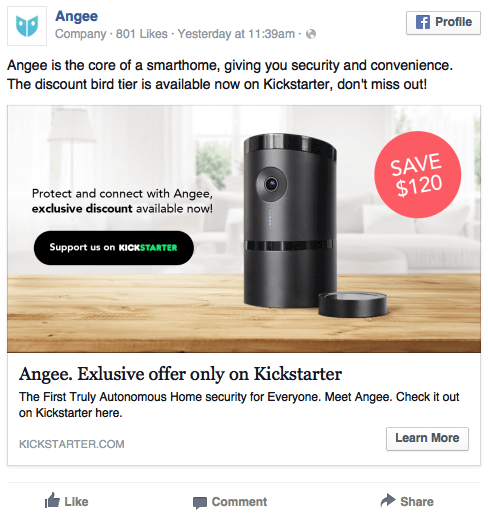
Here’s another thanking people and announcing that they’ve reached 50% of their goal:
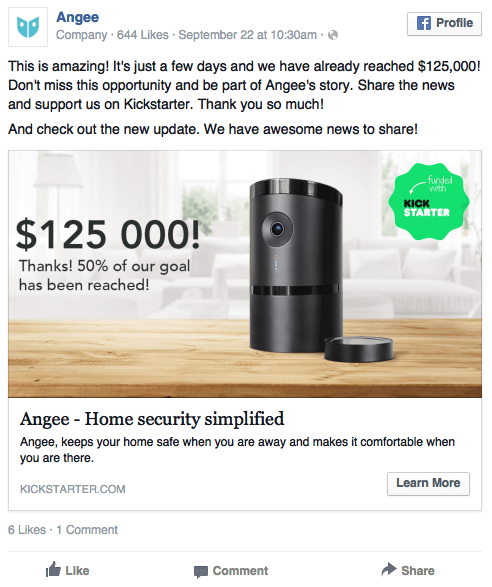
And here’s the final one, with a badge indicating that it was a Kickstarter staff pick, that it was 120% funded, and that there were still additional features to unlock with stretch goals.
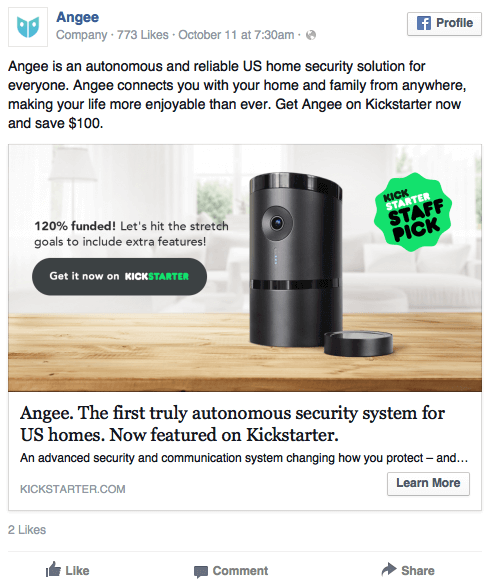
Kickstarters are dynamic. Your ads should be too. These Angee ads responded to what was going on in their campaign—and consumers responded along with it.
Maybe your project is the next potato salad. But odds are, you’re going to need to continually breathe life into your Kickstarter by promoting it around the clock. Relying on an awesome idea, or your existing Facebook friends, or even your status as an international popstar is not going to cut it. Treat your Kickstarter campaign with the respect it deserves by planning ahead, giving a thoughtful presentation, and promoting it with every resource available to you.
We can’t wait to see the final result.
[ad_2]
Source link


